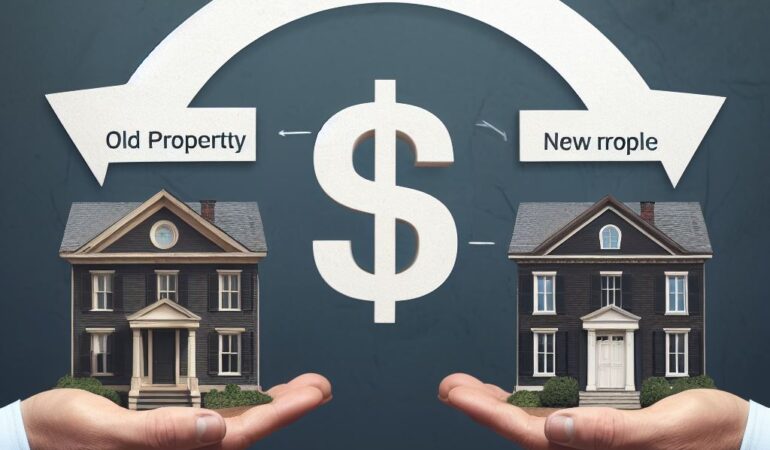Imagine you’re navigating a complex maze of tax regulations. Well, understanding the tax implications of a 1031 exchange is like finding the perfect shortcut.
In this article, we’ll guide you through the ins and outs of this tax-deferral strategy. From capital gains tax savings to the types of properties eligible for exchange, we’ll cover it all.
Get ready to dive into the technical details and gain a precise understanding of the tax consequences involved.
Key Takeaways
- A 1031 exchange allows for the deferral of capital gains tax, resulting in potential significant tax savings.
- Eligible properties for a 1031 exchange include real estate, land, commercial, residential, and industrial properties that meet the criteria for a like-kind exchange.
- There are specific timelines and deadlines to adhere to in a 1031 exchange, including a 45-day identification period and the completion of the exchange within 180 days or by the tax return due date.
- Depreciation recapture in a 1031 exchange is not eligible for deferral and is taxed at a maximum rate of 25%. Proper calculation of recaptured depreciation is crucial for understanding tax liability.
Capital Gains Tax Savings
You can save on capital gains tax by participating in a 1031 exchange. A 1031 exchange, also known as a like-kind exchange, allows you to defer paying capital gains tax on the sale of an investment property if you reinvest the proceeds into another property of equal or greater value. By doing so, you can potentially save a significant amount of money that would otherwise be paid in taxes.
The capital gains tax is a tax on the profit made from the sale of an investment property. When you sell a property, you’re typically required to pay capital gains tax on the difference between the purchase price and the sales price. However, with a 1031 exchange, this tax is deferred, allowing you to reinvest the entire amount into a new property.
The key advantage of a 1031 exchange is that it allows you to keep more of your investment capital working for you. Instead of paying taxes on the sale of one property, you can use the full amount to acquire another property, potentially increasing your potential for future growth and income.
It is important to note that a 1031 exchange is subject to certain rules and regulations. For example, the properties involved must be of like-kind, meaning they’re similar in nature, such as two residential properties or two commercial properties. Additionally, there are strict timelines that must be followed, including a 45-day identification period and a 180-day exchange period.
Eligible Properties for 1031 Exchange
To continue the discussion from the previous subtopic, let’s delve into the types of properties that qualify for a 1031 exchange. In order to be eligible for a 1031 exchange, the property you sell, known as the relinquished property, and the property you acquire, known as the replacement property, must meet certain criteria.
Here is a table that outlines the types of properties that qualify for a 1031 exchange:
| Eligible Properties |
|---|
| Real Estate |
| Land |
| Commercial Property |
| Residential Property |
| Industrial Property |
As shown in the table, real estate, land, commercial property, residential property, and industrial property are all eligible for a 1031 exchange. These properties, when properly identified and acquired within the required timeframes, allow you to defer capital gains taxes.
Now that you understand the types of properties that qualify for a 1031 exchange, it’s important to consider the timeline and deadlines for the exchange process.
Timeline and Deadlines for 1031 Exchange
Moving on to the timeline and deadlines for a 1031 exchange, it’s essential to understand the specific timeframes involved in this tax-deferment strategy. To ensure a successful exchange, it’s crucial to adhere to these deadlines:
- Identification Period: Within 45 days of selling your relinquished property, you must identify potential replacement properties. The identification must be in writing, signed, and delivered to a qualified intermediary (QI) or agent involved in the exchange. You can identify up to three replacement properties, regardless of their value, or any number of properties as long as their combined fair market value doesn’t exceed 200% of the relinquished property’s value.
- Exchange Period: The exchange must be completed within 180 days from the sale of the relinquished property or by the tax return due date, including extensions, whichever comes first. This period includes both the identification period and the exchange period.
Understanding and complying with these strict timelines is crucial to ensure the success of your 1031 exchange. Failure to meet these deadlines might result in disqualification of the exchange, leading to immediate taxation on the capital gains.
With the timeline and deadlines covered, it’s now important to address another key aspect of the 1031 exchange process: depreciation recapture.
Depreciation Recapture in a 1031 Exchange
Understanding depreciation recapture is essential in a 1031 exchange. Depreciation recapture refers to the taxation of the gain on the sale of a property that has been depreciated.
In a 1031 exchange, when you sell your relinquished property and acquire a replacement property of equal or greater value, you can defer the recognition of capital gains tax. However, the depreciation recapture portion of the gain isn’t eligible for deferral.
Depreciation recapture occurs when the amount of depreciation you have claimed on the property exceeds the adjusted basis. The adjusted basis is the original cost of the property plus any improvements made, minus any depreciation taken. The recaptured depreciation is taxed at a maximum rate of 25%, regardless of your ordinary income tax bracket.
To calculate the amount of depreciation recapture, you need to determine the accumulated depreciation that has been taken and subtract it from the adjusted basis. The resulting amount is the depreciation recapture, which is subject to tax.
Understanding depreciation recapture is important because it can significantly impact your tax liability in a 1031 exchange.
Now, let’s discuss the potential tax consequences of a failed exchange.
Potential Tax Consequences of a Failed Exchange
If your 1031 exchange fails and you’re unable to successfully acquire a replacement property, there are potential tax consequences that you need to be aware of. While a failed exchange means you won’t be able to defer capital gains taxes, there are still some options available to mitigate the tax impact.
Here are the potential tax consequences of a failed exchange:
- Recognition of capital gains: When a 1031 exchange fails, the capital gains from the sale of your relinquished property become immediately taxable in the year of the failed exchange. These gains will be subject to both federal and state income taxes.
- Loss of depreciation benefits: In a failed exchange, you’ll also lose the ability to defer the recapture of depreciation. This means that the accumulated depreciation deductions you claimed over the years will be recaptured and subject to taxation.
To minimize the tax consequences of a failed exchange, there are a couple of options:
- Offset capital gains with capital losses: If you have other capital losses, you can use them to offset the capital gains from the failed exchange. This will help reduce your overall tax liability.
- Consider a 1031 reverse exchange: In certain cases, you may be able to perform a reverse exchange, where you acquire the replacement property first and then sell the relinquished property. This can help salvage the 1031 exchange and defer the capital gains taxes.
It is important to consult with a qualified tax advisor to fully understand the potential tax consequences and explore your options in case of a failed 1031 exchange.
Frequently Asked Questions
Are There Any Restrictions on the Types of Properties That Can Be Exchanged in a 1031 Exchange?
There are restrictions on the types of properties that can be exchanged in a 1031 exchange. The IRS states that only like-kind properties can be exchanged, meaning properties that are similar in nature or character.
Can Personal Property Be Exchanged in a 1031 Exchange?
Can personal property be exchanged in a 1031 exchange? Yes, personal property can be exchanged as long as it is held for productive use in a trade or business or for investment purposes.
How Long Do I Have to Identify Replacement Properties After Selling My Property in a 1031 Exchange?
You have 45 days to identify replacement properties after selling your property in a 1031 exchange. This timeline is important to ensure that you meet the requirements of the exchange and avoid any tax implications.
Is There a Limit on the Number of Properties That Can Be Identified as Replacement Properties in a 1031 Exchange?
There is no limit on the number of properties you can identify as replacement properties in a 1031 exchange. You can identify as many properties as you want, as long as you meet the other requirements.
Can I Use a 1031 Exchange to Defer Taxes on a Property That Was Not Used for Business or Investment Purposes?
Yes, you can use a 1031 exchange to defer taxes on a property that was not used for business or investment purposes. This allows you to exchange it for another property without incurring immediate tax liability.




